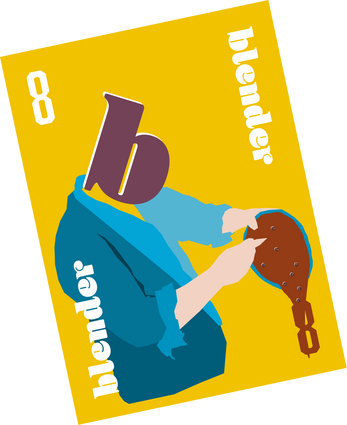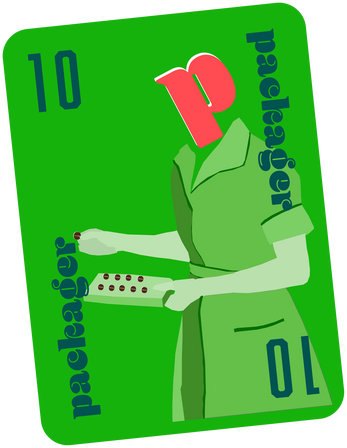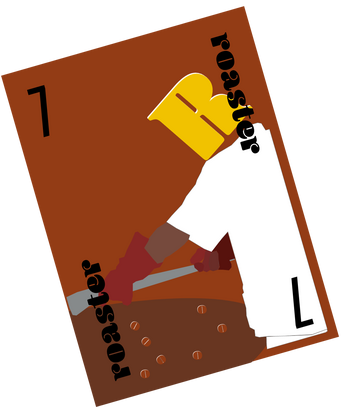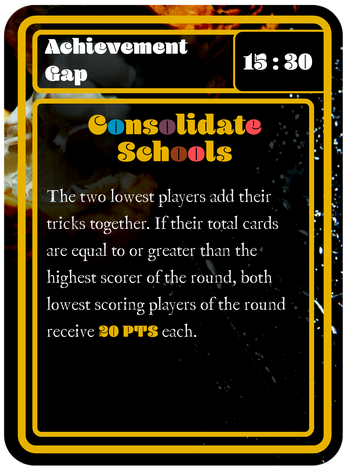
Make The World Taste Good
A downloadable game
Since its inception, white parents have been at the center of shaping public education (Joffe-Walt, 2020). And, in New York City, this is no different. White parents’ ability to organize, direct funds, drive enrollment, and shift policy is one of the key factors that distinguish them from their non-white counterparts (Serbulo, 2019).
We need parents (especially white parents) that focus less on the prestige, opportunities, success, and privilege of their children, and more on the needs of all children, collectively. If white parents can identify with the needs of others and see what impact their advocacy on inequitable systems is having on all children, then we stand a chance to recalibrate the public school system so it lifts all students to their highest potential.
In Make The World Taste Good, players learn
- The impact of individual gains vs. group gains.
- How manipulating policies that directly influence their success can create inequitable outcomes.
- collaboration as a tool to overcome inequities.
The future of chocolate is here!
Make The World Taste Good is a game that sets its sights on the future of chocolate. In the future, culinary schools spin off hyper-specialized chocolate schools of art. These schools attract top culinary talent by recruiting Master Chocolate Chefs who practice, perfect, and share expertise in the chocolate industry. These Master Chocolate Chefs draw students in droves creating prestigious chocolate institutions that compete for their bodies. These students bring funding, and this funding brings their schools power, and influence.
Make Great Chocolate Schools of Art
At its core, this is a simple trick-taking game played in rounds. You are one of six players who runs one of the six chocolate schools of art in the world. Your goal is to become the most prestigious and powerful school. You’ll do this by not only graduating as many students as you can each year but also graduating significantly more students than any of the other schools, especially the lowest-performing school.
Each card in the tricks that you win equals one student. Each student equals one point. Each round of the game equals one year.
- Graduate the most students after 12 rounds of play
- Ensure that you have the widest gap between you and the lowest-performing player
- Win the game
Use Rules to Make Your World Taste Good
You can spend the points you earn from tricks you've won to add new rules that provide you benefits during the game. These rules are available through Light Achievement Gap cards and Dark Achievement Gap cards.
- Light Achievement Gap cards are designed to give the leading scorer an advantage. These cards cost ten (10) points to purchase and play and 3 points to remain in play until an event removes them from play.
- Dark Achievement Gap cards are designed to give the lowest-point scorer an advantage. These cards do not cost points to purchase but require a Light Achievement Gap card achievement gap condition to be met in order to activate.
A Work in Progress
I decided to use a couple of familiar card game mechanics and standards: trick-taking and Uno. I believe this makes the game quick to understand so that players can get in right away and start playing.
The way that trump cards work during play follows a similar mechanic from Uno. In early playtests, the familiar design showed strong gameplay scaling the player age from adults to 10-year olds. The trump mechanic was more complicated in early iterations of gameplay. By Simplifying the trump mechanic from its original concept, and leveraging familiar gameplay mechanics from Uno, I made it easy for players to jump right in and understand the game.
The Light and Dark Achievement cards attempt to generalize and obfuscate to some extent a simulated version of the U.S. public school systems. These cards are still coming along from a design perspective.
The moment/timing when either the Light or Dark Achievement cards become available must be balanced and timed precisely so that the lowest-scoring player has a feeling that he can overcome the gap while feeling competitive and learning new ways to manipulate the rules by selecting the right Achievement Gap cards. The highest-scoring player should be oscillating emotionally between empathy and tyranny, and neither feeling should be fully realized until the player has learned that collaborative play is the most fun way to play the game.
| Status | In development |
| Category | Physical game |
| Author | stillmoretogain |
| Genre | Card Game, Educational |
| Tags | chocolate, trick-taking |







Leave a comment
Log in with itch.io to leave a comment.